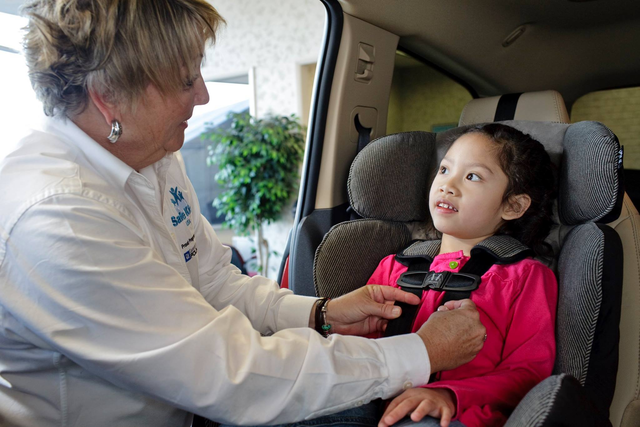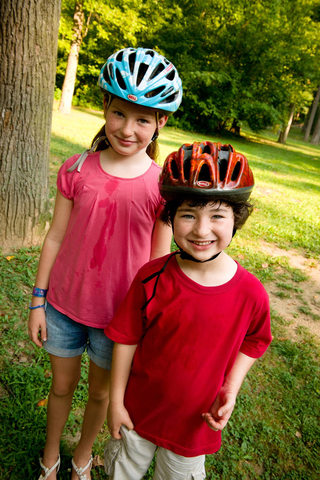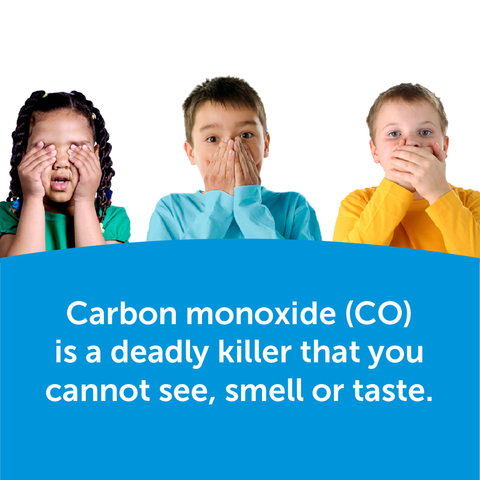A Fun and Safe Summer for All
June 8, 2023
By Lydia Zerby
Please note that by clicking the following links, you’ll be leaving a partially funded checkoff site.
Summer is here, and kids will have the chance to enjoy numerous outdoor activities such as biking and swimming. With these activities comes the opportunity to remind and engage parents and caregivers about safety and injury prevention. This month we’re talking with Iowa FFP partner UnityPoint Health and their experts about keeping kids safe. “Summer is supposed to be a fun time for our children. However, it’s not uncommon to see an increase in pediatric injuries during these months,” says Katy Sowden with Safe Kids Greater Des Moines. “We want to make sure parents and caregivers have the tools they need to help keep their kids safe to ensure a fun summer.”
Safe Kids Iowa, led by Blank Children's Hospital, is a diverse group of individuals and agencies who strive to prevent injuries from occurring to Iowa children from birth to 19 years old. Safe Kids Iowa is a member of Safe Kids Worldwide, a global network of organizations dedicated to preventing injuries.
Safe Kids Greater Des Moines is a local coalition also led by Blank Children's Hospital. Formed in August 1994, the coalition is comprised of individuals from over 20 different local organizations including; police departments, hospitals, children's services, businesses and state and local health departments. Their mission is to work together to ensure the safety of all children.
Safe Kids Greater Des Moines focuses on a variety of topics and participates in various community events, including:
- All Heads Covered: Bicycle and Wheeled Sport Safety
- Gun Safety
- Walk this Way Pedestrian Safety
- Child Passenger Safety
- Preventing Falls
- Fire Safety
- Water Safety
- Medication Safety
Being informed and prepared with the safety tips below from Safe Kids Greater Des Moines will help everyone feel more relaxed while enjoying all Iowa offers in the summer!
Child Passenger Safety
- Choose the right car seat for your child’s weight, height and age.
- Use and install your car seat according to the directions.
- A properly installed car seat should not move more than 1 inch when the base is tugged.
- Keep children in rear-facing seats as long as possible until the child has outgrown the seat by height or weight.
- Teach your kids from a young age to buckle up every ride, every car and every time.
Fit Station
On the first Thursday of every month, Child Passenger Safety Technicians are available at Bob Brown Chevrolet in Urbandale to inspect car seats for families. The service is completely free, and no appointment is necessary. Stop by between 5 p.m. - 7 p.m.
PARK. LOOK. LOCK - Never leave a child alone in a car.
Remember to ACT
- A - Avoid Heatstroke: Avoid heatstroke-related injury and death by never leaving a child alone in a car, not even for a minute. Make sure to keep your car locked when you’re not inside so kids don’t get in on their own.
- C - Create Reminders: Keep a stuffed animal or other memento in your child’s car seat when it’s empty, and move it to the front seat as a visual reminder when your child is in the back seat. Or, place and secure your phone, briefcase or purse in the backseat when traveling with your child.
- T - Take Action: If you see a child alone in a car, call 911. Emergency personnel wants you to call. They are trained to respond to these situations.
Vehicle temperatures can heat up nearly 20 degrees in just 10 minutes, making it dangerous for any passenger. A number of these incidents occur when a child has gained access to an unlocked vehicle and then become trapped inside. Be sure to teach children to never play in a vehicle and make it a habit to lock vehicles when not in use. Watch this video to see how quickly the temperature in a vehicle can rise.
Water Safety
|

|
- Watch kids around water. Keep young children within arm’s reach of an adult.
- Enroll children in survival swim lessons and learn CPR.
- Install 4-sided fences around home pools.
- Teach children that swimming in open water differs from swimming in a pool.
- Children should be properly fitted with child life jackets. Adult life jackets should not be used for children as they may not be tight enough, allowing them to slip out.
|
Bike Safety

- Remind your child to wear a properly fitted helmet when biking, skateboarding, riding a scooter or inline/roller skating.
- In this video, learn how to fit a helmet properly.
- Check equipment. Make sure your child’s bike is the appropriate size and works properly.
- Teach your kids the rules of the road. Make sure they know proper hand signals and understand traffic signs and signals.
- Be sure your kids are seen while riding. Wearing bright colors, using lights and wearing reflectors will help them be seen.
- Teach kids to ride on the sidewalk when they can. If not, ride in the same direction as traffic as far on the right-hand side as possible.
Home Safety
|

|
- Install smoke alarms on every level of your home, inside bedrooms and near sleeping areas.
- Test alarms every month. Create a home fire escape plan with two ways out of every room.
- Install carbon monoxide (CO) alarms and test alarms every month. In a CO emergency, leave your home immediately.
- Watch children around balconies and windows.
- Install window guards and safety gates on stairs to prevent falls.
- Anchor unstable furniture to the wall. Use anti-tip brackets or wall straps to secure top-heavy furniture to the wall.
|
Sleep Safety

- Place babies on their backs for naps and at night until they are one year old. Make sure babies sleep on a firm, flat surface in their crib, bassinet or play yard.
- Choose a firm mattress and fitted sheet for the baby’s crib.
- Remove toys, blankets, pillows, bumper pads and other accessories.
- Dress baby in a wearable blanket or onesie. A loose blanket could cover a baby’s airway or make their body temperature too high while they sleep.
- Share your room, not your bed. Place baby’s crib, bassinet or play yard in your bedroom instead of letting baby sleep in the same bed with you.